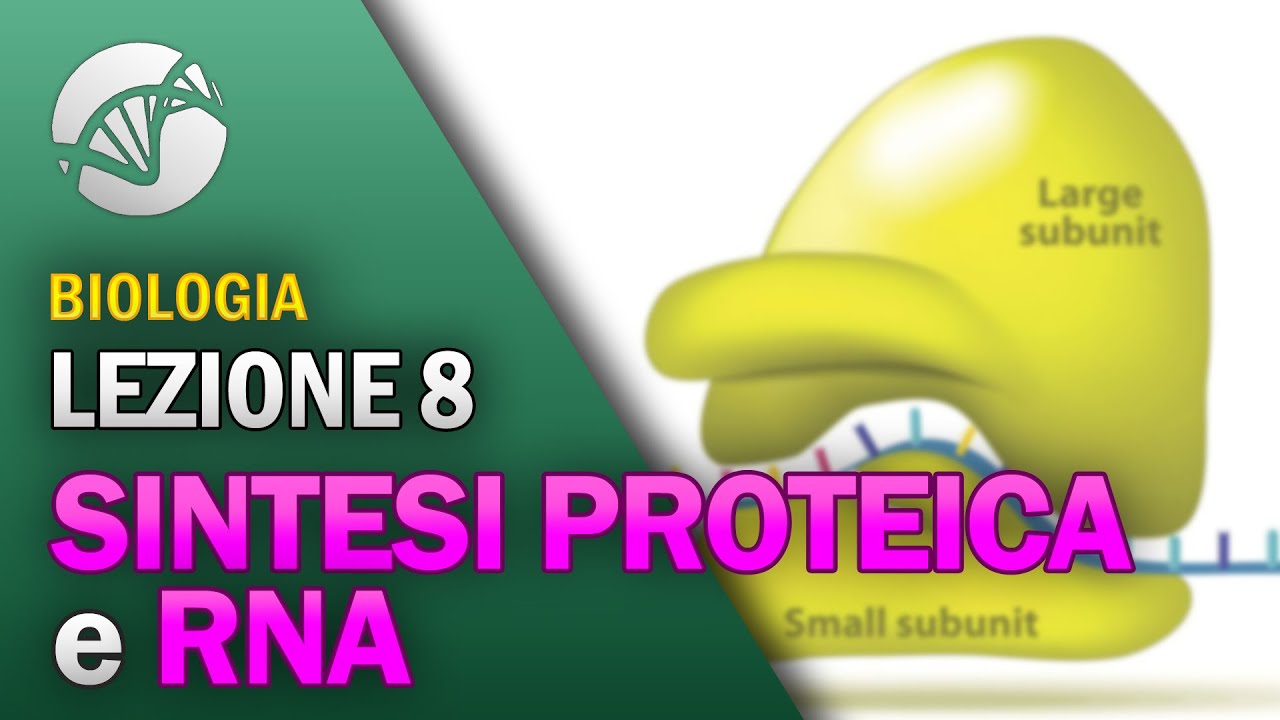Transcription (DNA to mRNA)
Summary
TLDRThis script explains the journey of genetic information from DNA to protein synthesis. It starts with genes in DNA, which are transcribed into messenger RNA (mRNA) by RNA polymerase. The mRNA then undergoes splicing to remove non-coding introns and is modified for maturation. Finally, mature mRNA leaves the nucleus to enter the cytoplasm, where its codons are translated into a sequence of amino acids, forming a protein.
Takeaways
- 🧬 DNA contains genes which are continuous strings of nucleotides.
- 🔑 Genes have a promoter at the start and a terminator at the end.
- 🔍 Regulatory sequences near the promoter control gene expression.
- 🔗 The promoter region is a binding site for RNA polymerase.
- 🌀 RNA polymerase causes the DNA helix to unwind during transcription.
- 📝 The RNA polymerase adds nucleotides to form the mRNA molecule.
- 🛑 Transcription ends when RNA polymerase reaches the terminator.
- ✂️ Introns are removed and exons are spliced together in the mRNA.
- 🧩 Spliceosomes, made of proteins and RNA, perform intron splicing.
- 🚪 The mature mRNA exits the nucleus and enters the cytoplasm for translation.
- 🌐 The genetic code is made up of 64 codons, most of which specify amino acids.
Q & A
What are genes and what do they contain?
-Genes are segments of DNA that contain a region coding for an RNA molecule. They are continuous strings of nucleotides that determine the genetic characteristics of an organism.
What is the role of a promoter in a gene?
-A promoter is a regulatory sequence in a gene that serves as a recognition site for RNA polymerase to bind. It controls the initiation of transcription by either permitting or blocking access to the RNA polymerase.
What happens when RNA polymerase binds to the promoter?
-When RNA polymerase binds to the promoter, it causes the DNA double helix to unwind and open, allowing the transcription process to begin.
Describe the process of elongation during transcription.
-During elongation, RNA polymerase slides along the template DNA strand, with complementary bases pairing up. The RNA polymerase then links nucleotides to the 3' end of the growing RNA molecule.
What is the function of the terminator in a gene?
-The terminator is the portion of the gene where transcription ends. Once RNA polymerase reaches the terminator, the messenger RNA transcript is complete, and the RNA polymerase, DNA strand, and mRNA dissociate.
What are exons and introns in the context of mRNA?
-Exons are the coding regions of the mRNA that contain sequences for a protein, while introns are the non-coding sections that need to be removed for the mRNA to be functional.
What is the purpose of intron splicing?
-Intron splicing is the process of removing introns from the mRNA and joining the adjacent exons to produce a mature mRNA strand that can be used in translation.
What is a spliceosome and what does it do?
-A spliceosome is a complex made up of proteins and RNA that performs intron splicing. It removes intron segments and joins the exons to produce a mature mRNA strand.
How does the mature mRNA strand leave the nucleus?
-The mature mRNA strand leaves the nucleus through a nuclear pore and enters the cytoplasm, where it can begin the process of translation.
What are codons and how many are there in the genetic code?
-Codons are three-letter codes made up of nucleotide bases that determine the sequence of amino acids in a protein. There are 64 codons in the genetic code.
What do the four special codons represent?
-The four special codons include one that codes for the start of protein synthesis and three that code for stop, signaling the end of translation.
Outlines

Esta sección está disponible solo para usuarios con suscripción. Por favor, mejora tu plan para acceder a esta parte.
Mejorar ahoraMindmap

Esta sección está disponible solo para usuarios con suscripción. Por favor, mejora tu plan para acceder a esta parte.
Mejorar ahoraKeywords

Esta sección está disponible solo para usuarios con suscripción. Por favor, mejora tu plan para acceder a esta parte.
Mejorar ahoraHighlights

Esta sección está disponible solo para usuarios con suscripción. Por favor, mejora tu plan para acceder a esta parte.
Mejorar ahoraTranscripts

Esta sección está disponible solo para usuarios con suscripción. Por favor, mejora tu plan para acceder a esta parte.
Mejorar ahoraVer Más Videos Relacionados

Kamu unik, dan genmu adalah buktinya! Simak video ini....bagaimana DNA membentuk dirimu🧍🏻👋🏻

Biologia Molecular - Introdução - Biologia Básica - Me Salva! Saúde

BAB 6 PEWARISAN SIFAT DAN BIOTEKNOLOGI Part 1 (IPA Kelas 9 Kurikulum Merdeka)

Síntese Proteica (Parte 1) - Transcrição | Prof. Samuel Cunha

Transcription Process | Gene Expression | From DNA To mRNA | Class 12 Biology

BIOLOGIA - Lezione 8 - Sintesi Proteica e RNA
5.0 / 5 (0 votes)
